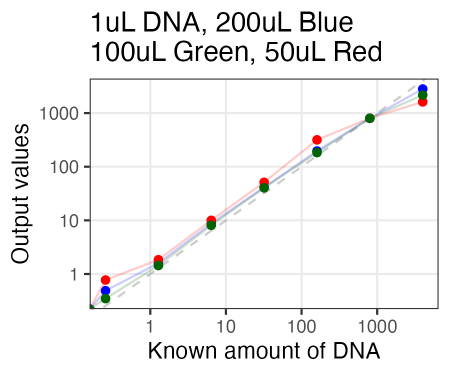When I was an early PhD student, I barely knew about the NSF GRFP, and it wouldn’t matter if I did since I felt too overwhelmed / behind on everything to consider applying. Fast forward to my postdoc, where I was in a lab that expected you to write for postdoc fellowships (it’s a good policy, btw), in a department where half the grad students seemed to *win* an NSF GRFP any given year; this experience made me realize just how useful of a training opportunity writing fellowship applications can be, as well as helping me to realize that there can be a bit of a feed-forward effect for success, where being awarded a competitive fellowship early on opens up a small number of additional possibilities, which can compound over time until the final result ends up being a large effect.
Well, simply bringing this ethos with me when starting my own lab seemingly isn’t enough; there are apparently entire institutional administrative systems that can get in the way. I’ve already talked about a previous experience, where the school grants offices wouldn’t allow a student’s application to be sent since they weren’t in the internal grants management system yet, despite the fact that NSF GRFP applications are supposed to be sent in by the student. At least that application got saved at the 11th hour, and was actually successfully submitted and reviewed, even though it went unfunded.
This year, we had two students put together well-prepared, complete applications, only to be disqualified on the same technicality. Turns out, sometime within the last two years, the school started putting a summer class on the transcripts of incoming biomedical PhD students; in short, instead of the first entry of their transcript being the fall quarter, there is a summer quarter listed on the transcript preceding it. In actuality, the only thing that is happening during this time is rotations, which typically start in July or August here. There may be a handful of workshop type things, but nothing that counts as an academic course that is a requisite for eventually graduating. It’s effectively the same situation as most other PhD programs in terms of timing of official instruction.
Well, in the case of 2nd year grad students, NSF considers that summer transcript entry as indication that they have completed 1 year of graduate coursework prior to submission, disqualifying them. Each of the two students got an email from NSF saying so, and each student tried to get a statement from the university administration clarifying the situation. In neither case was the school willing to deviate from whatever legal wording they already had, so the disqualification appeal filed by the student was denied by NSF.
So two applications (and probably more) where, in retrospect, the student was writing the application documents, as well as corralling letter writers, with a 0% chance of success. You’d think the school would want to change their transcript policies to not unnecessarily disqualify their biomedical PhD students from the NSF GRFP, but there was seemingly little indications that the contacted administrators will do anything about it. So essentially, no CWRU School of Medicine PhD student in their second year should submit an NSF GRFP application, unless something changes. Maybe (hopefully), this isn’t the case with other CWRU schools, like those overseeing biology or bioengineering.
Well, the biomedical PhD students can still apply in their first year, right? I suppose so, although if they’re new to the campus, they probably aren’t writing their application based on a 4 to 6 week rotation (the expected rotation duration in our school). Only those that were in the know and had strong, supportive research environments prior to grad school would be in the running, and I suspect that isn’t a large fraction of our incoming student populations.
So a school that simultaneously bemoans a lack of student fellowships, yet through lack of experience and rigid / misguided administration, manifests the same situations it bemoans, with little indication that this will ever change even when notified of the problem. Institutions, man.



















